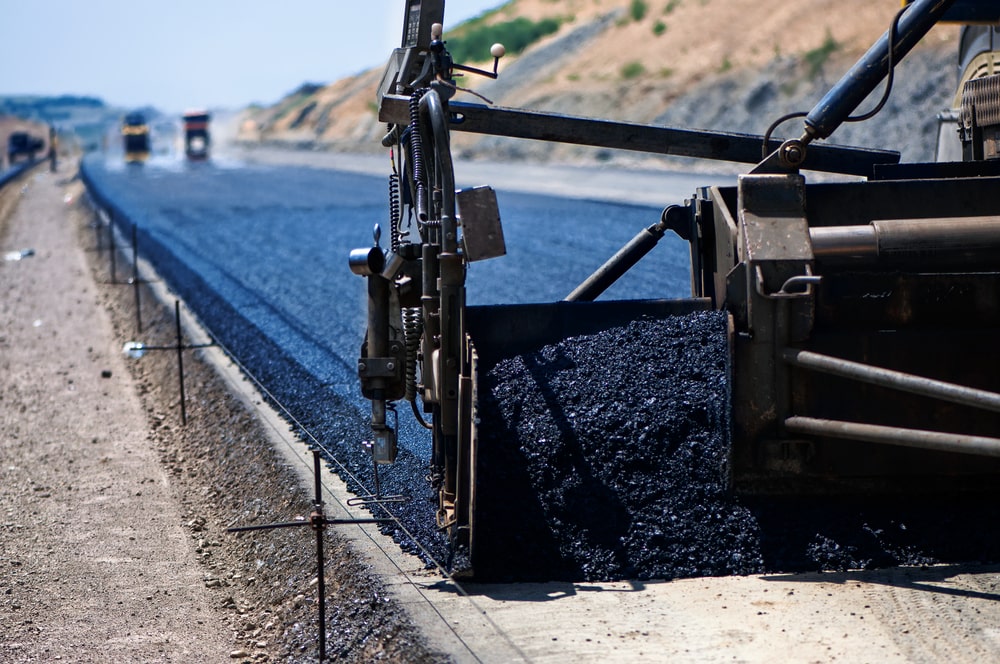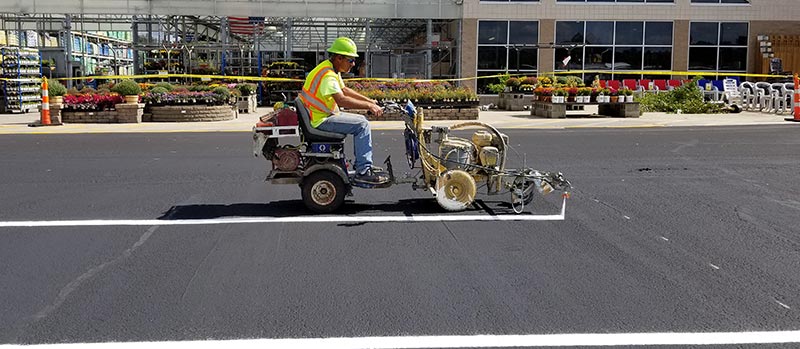Rumored Buzz on A1 Professional Asphalt & Sealing Llc
Rumored Buzz on A1 Professional Asphalt & Sealing Llc
Blog Article
The 7-Minute Rule for A1 Professional Asphalt & Sealing Llc
Table of ContentsAll about A1 Professional Asphalt & Sealing LlcA1 Professional Asphalt & Sealing Llc Can Be Fun For EveryoneNot known Details About A1 Professional Asphalt & Sealing Llc The Single Strategy To Use For A1 Professional Asphalt & Sealing LlcA1 Professional Asphalt & Sealing Llc - Truths

The oil in an auto engine is not simply oil. It contains a range of additives to enhance the automobile's performance. These include polymers, viscosity modifiers, warm stabilizers, additional lubricating substances, and put on additives. The REOB includes all the additives that remained in the waste oil in addition to the wear metals from the engine (mainly iron and copper).
Nonetheless, by making several blends making use of various REOB examples and different asphalt binders, the variants greatly can be averaged out. Numerous States supplied examples of recognized REOB structure to TFHRC scientists, that assessed the examples to contrast the percentage of included (understood) REOB to the found (evaluated) quantity. The evaluations revealed an equivalent percentage of added and found REOB.
A1 Professional Asphalt & Sealing Llc - Truths
None of those States recognized that the asphalt they were purchasing consisted of REOB. One State urged its samples had no REOB - https://experiment.com/users/jtally.
Of the 1,532 samples evaluated, 12 percent had REOB, and some consisted of substantially high degrees of it at 1020 percent. The highest degree was 34 percent in a sample from Texas, which TxDOT had actually utilized in a patching substance. This testing additionally disclosed the visibility of phosphoric acid in 11 percent of the samples, and 2 percent consisted of ground tire rubber.
2 years ago at TRB's yearly conference, the Federal scientists held an REOB workshop and offered the searchings for of their research laboratory assessments to a standing room-only crowd. Some agencies do not especially prohibit REOB, they do impose physical examinations that prevent its useeffectively a ban. Others do not ban it by spec, however have contracts with asphalt distributors to stay clear of the use of REOB
The 2-Minute Rule for A1 Professional Asphalt & Sealing Llc
A handful do permit REOB, some within particular limits. Ohio and Texas limitation degrees to less than 5 percent of the asphalt. To create a trusted examination method that all States can utilize, the TFHRC scientists set up a round-robin test strategy. The participants are 11 State freeway companies (Illinois, Massachusetts, Minnesota, Mississippi, Montana, North Carolina, Oklahoma, South Carolina, Texas, Vermont, and Wyoming), 2 independent testing laboratories, the Ministry of Transportation in Ontario, Queen's University in Ontario, and an Ontario paving contractor.
In total amount, the researchers prepared and delivered 720 blends. The individuals are evaluating the samples separately using the guidelines given by the TFHRC researchers. The round-robin screening is nearly finished, and TFHRC remains in the procedure of gathering the outcomes. The outcome will be a recommended AASHTO test technique that any kind of State can embrace and use (diagonal parking vs straight parking).
The sidewalk with REOB, which is located 0.6 mile (1 kilometer) from the sidewalk without REOB, has identical subgrade, traffic thickness, and climate. However, the segment of Highway655 with 5 to 10 percent REOB showed substantial fracturing. In this example, the visibility of REOB was the recognized reason of splitting at a reduced temperature levels.
An area of examination pavement in Minnesota (MN1-4) located to include REOB additionally cracked too soon. The pavement carried out well for the initial 3 to 4 years, however then began to fracture.
Some Ideas on A1 Professional Asphalt & Sealing Llc You Should Know
The tests were not comprehensive, but they showed that at levels of 6 percent or more, the tensile strength of the asphalt dropped significantly. At a degree of 3.5 percent REOB, the variation in the physical examination approaches was higher than the result of REOB. In reality, it was challenging for scientists to examine whether REOB was existing.

One binder parameter considered is the difference in between the low temperature level critical specification temperature for rigidity (S) in the flexing light beam rheometer and the bending beam of light rheometer creep slope (m-value) noted as Tcritical. 2 independent study teams, one from AASHTO and the other from visit homepage the Asphalt Institute, concluded that more research study is required on the use of REOB in asphalt.
Formerly, all asphalt testing determined engineering buildings such as rigidity. These tests do disappoint what materials had been contributed to the asphalt. One example obtained during the TFHRC research study had an extremely odd analysis. The example had the complying with examination results: Superpave PG 64-28 with a heat quality of 67.3 Tcritical on the bending beam rheometer was 6.7 levels Celsius.

Not known Facts About A1 Professional Asphalt & Sealing Llc
These results demonstrate there are weak points in the standard engineering testing procedures that might be manipulated. The manufacturer might have an economic advantage and the product passes all the standard tests, however the product may not be beneficial to ensuring long-lasting performance. To resolve this concern and the expansion of brand-new asphalt additives and extenders, TFHRC is starting a research program to utilize portable spectroscopic devices, x-ray fluorescence spectroscopy, and Fourier change infrared spectroscopy to make it possible for evaluations to be performed in the field instead of needing to take examples back to the laboratory.
Report this page